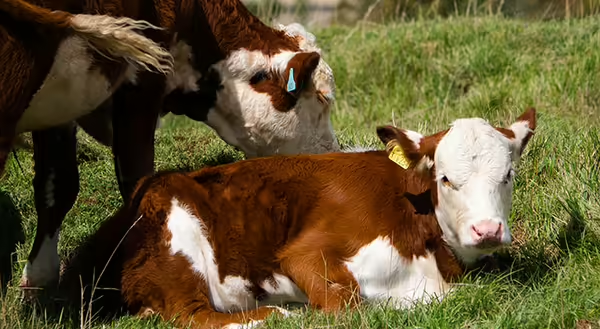
Feed costs represent the greatest percentage of total costs for cow/calf producers. Thus, focusing on opportunities to reduce feed costs will lend to the greatest cost control for cow/calf operators. Improving management of permanent pastures is crucial to profitability. Increasing land costs, commodity prices, and other inputs are all factors in incentivizing better pasture management. Although it is nearly impossible to discuss all the factors that go into improving pasture management, here are some considerations and tips to make pastures more productive and profitable.
Rest Keeps Roots
Resting plants allows them to recover leaf tissue without robbing the root base. Continuous grazing will result in animals overgrazing as they will continue to graze down the most palatable plants. Overgrazing reduces yield, lowers root reserves, and makes plants more susceptible to drought.
Plants need leaves to collect sunlight and roots to absorb water and nutrients. Rest allows leaf and root mass to sustain optimal photosynthesis and thus better growth/yield. One of the best indicators that a plant has recovered is when the tips of the leaves of the plant are sharp. Stands of forage that are less stressed will have more leaf to stem ratio and will maintain a vegetative state longer in the grazing season.
Dense, Diverse Swards Help Weed Control
Weeds are a part of the landscape. A well-managed pasture will have a diverse sward of palatable, desirable species and less weeds. An overlooked weed control strategy is correctly managing forages to promote a dense, thick stand. This likely starts with proper stocking rates and resting forages. Inevitably, you will have weeds in a pasture that need controlled. Mechanical control via mowing can work well or spot spraying herbicides is a good option. Broad-spectrum herbicide applications can remove wanted/valuable forages.
Weeds can be signaling soil imbalances, excesses, and deficiencies. Improving soil fertility and correcting mineral imbalances or pH balances can help alleviate weed pressure. Overgrazing will result in more openings in the stand and more weed pressure.
Poor Fertility Creates Problems
Low soil fertility is one of the biggest hurdles to maximizing forage production. Soil testing is a must. If soil fertility lacks, add fertility when cost effective. Balancing soil pH and mineral imbalances can often be done with more cost effectively than broad fertilizer applications. Overgrazing, haying, and soil erosion all remove nutrients. Grazing animals deposit a large portion of the nutrients back onto the pasture in the form of manure. However, nutrients can be concentrated in areas of shade, water, and windbreak areas.
Water, Shade, and Paddock Size Impact Grazing Utilization
Distance to water, location of shade, and size and shape of the paddock can really determine grazing patterns. As a result, larger and more obtuse shaped pastures may be unevenly grazed. This alone can cause overgrazing to certain areas. Square shaped paddocks that have water within 800 ft. of the boundaries will be the most evenly grazed. Managing the time the animals are in a certain area is the best way to improve forage utilization. Continuous grazing results ~ 30% pasture utilization. A 7-day rotation with 6 paddocks results in approx. 55% utilization. Moving cattle once or more a day will result in a 75% utilization. A planned, adaptive grazing plan is needed by all grazers to ensure a successful grazing season that results in economical production of healthy animals